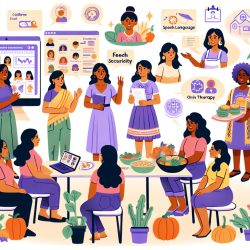Implementing Research-Based Strategies to Prevent Youth Smoking

Preventing smoking among young people is a critical public health concern due to the addictive nature of tobacco and the severe health risks associated with its use. A systematic review titled "Preventing Smoking in Young People: A Systematic Review of the Impact of Access Interventions" provides valuable insights into effective strategies for reducing illegal tobacco sales to minors. This blog aims to help practitioners improve their skills by implementing the outcomes of this research or by encouraging further exploration into the topic.
Key Findings from the Research
The review highlights several critical points:
- Multi-Component Interventions: Comprehensive strategies that combine merchant education, community awareness, and active enforcement of tobacco laws are most effective in reducing illegal sales.
- Active Enforcement: Ongoing enforcement, including publicized prosecutions and successive retail inspections, significantly decreases illegal sales.
- Age and Identification Requests: Requiring age and identification verification dramatically reduces the likelihood of illegal tobacco sales to minors.
- Merchant and Clerk Characteristics: Younger, male clerks are more likely to sell tobacco to minors. Tailored training for merchants based on these demographics can improve compliance.
- Social Sources: Youth often obtain tobacco through social sources like family and friends. Addressing these alternative access points is crucial for comprehensive prevention.
Practical Steps for Implementation
Based on the findings, practitioners can take several actionable steps to enhance their efforts in preventing youth smoking:
- Educate Merchants and Communities: Develop and disseminate educational materials that highlight the importance of complying with minimum age laws and the health risks of youth smoking.
- Implement Multi-Component Strategies: Combine merchant education with community campaigns and stringent enforcement measures. This holistic approach has been shown to be the most effective.
- Regular Compliance Checks: Conduct regular, unannounced compliance checks to ensure merchants are adhering to the laws. Publicize the results to maintain community awareness and accountability.
- Tailored Training Programs: Provide targeted training for younger and male clerks, who are statistically more likely to sell tobacco to minors. Emphasize the importance of asking for identification.
- Address Social Sources: Develop interventions that target social sources of tobacco, such as educational programs for parents and peers about the dangers of providing tobacco to minors.
Encouraging Further Research
While the review provides a solid foundation, it also underscores the need for further research, particularly in understanding the impact of access restrictions on youth smoking behavior. Practitioners are encouraged to:
- Explore the effectiveness of different enforcement strategies in various community settings.
- Investigate the role of social sources in youth tobacco access and develop targeted interventions.
- Examine the long-term effects of access restrictions on smoking initiation and cessation among youth.
Conclusion
Preventing youth smoking requires a multifaceted approach that combines education, enforcement, and community involvement. By implementing the strategies highlighted in the systematic review, practitioners can significantly reduce illegal tobacco sales to minors and contribute to a healthier, smoke-free future for young people.To read the original research paper, please follow this link:
Preventing Smoking in Young People: A Systematic Review of the Impact of Access Interventions.
Citation: Richardson, L., Hemsing, N., Greaves, L., Assanand, S., Allen, P., McCullough, L., Bauld, L., Humphries, K., & Amos, A. (2009). Preventing smoking in young people: A systematic review of the impact of access interventions. International Journal of Environmental Research and Public Health, 6(4), 1485-1514. https://doi.org/10.3390/ijerph6041485










